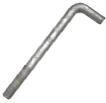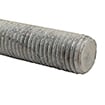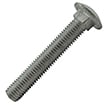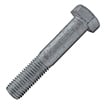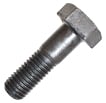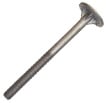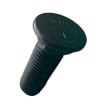- Bolts
-
- Bent Anchor Bolts
- Fully Threaded Studs
- Carriage Bolts
- Hex Cap Screws & Hex Bolts
- Class 4.8 Hex Cap Screws YZP
- Class 8.8 Hex Cap Screws YZP
- Class 10.9 Hex Cap Screws YZP
- Grade 18-8 Stainless Steel
- Grade 18-8 SS Tap Bolts
- Grade A Hex Bolts Zinc Plated
- Grade A Hex Bolts HDG
- Grade A Hex Bolts Plain Finish
- Grade 8 Hex Cap Screws Plain
- Grade 8 Hex Cap Screws YZP
- Grade 5 Hex Cap Screws ZP
- Grade 8 Fine Thread HCS BO
- Structural Bolts
- Timber Bolts
- Plow Bolts
Bolts

Hex Bolts & Hex Cap Screws come in a variety of styles to meet many different application needs. They come in many different standard grades and property classes with different finishes and markings. The type of steel and the treatment of the material during manufacture determine the strength & ability to perform. Tensile strength & yield strength are the major factors in classifying bolt grades and types. Bolts are made to SAE (Society of Automotive Engineers) standard J429, various ASTM (American Society for Testing and Materials) standards and ISO (International Organization for Standardization) standards. Examples of SAE J429 standards are Grade 2, Grade 5, & Grade 8. Examples of ASTM Standards are A307 Grade A (A307A) and A325 Type 1. Examples of ISO standards are property classes 8.8 and 10.9. The grades, types and classes are designated by markings on the bolt head. The diameter of a bolt is determined by measuring the diameter of the shank. The length of a bolt is determined by measuring the distance to the end of the threads from under the hex head. The head size is determined by measuring across the flats of the hexagonal head. The head size determines the wrench or socket size to use when tightening. Hex Bolts & Hex Cap Screws come in a variety of finishes. Plain finish, zinc plated, yellow zinc plated and hot-dipped galvanized are most common. Be sure to match the grade & finish of your bolt with the nut for a proper assembly.

